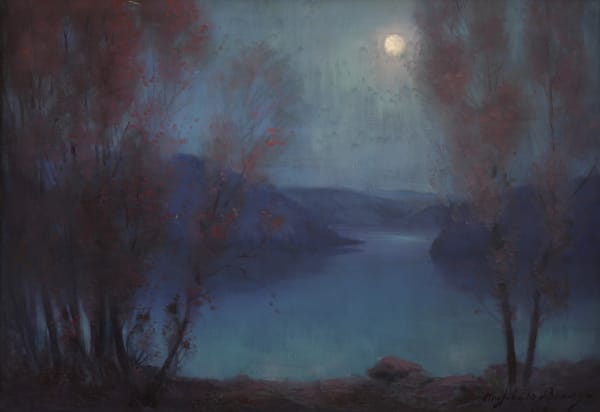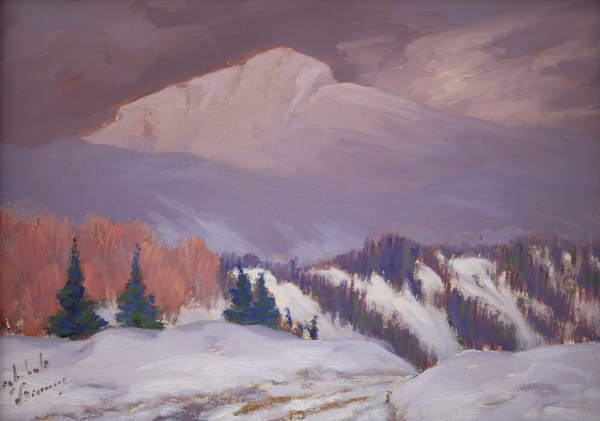Joseph Archibald Browne RCA (February 28, 1862 – November 7, 1948) was celebrated for his lyrical depictions of the Canadian landscape, earning him the title “The Poet Painter of Canada.” His canvases captured the serene poetry of nature in moonlit waters, misted glens, and radiant sunsets, blending realism with a subtle, impressionistic glow.
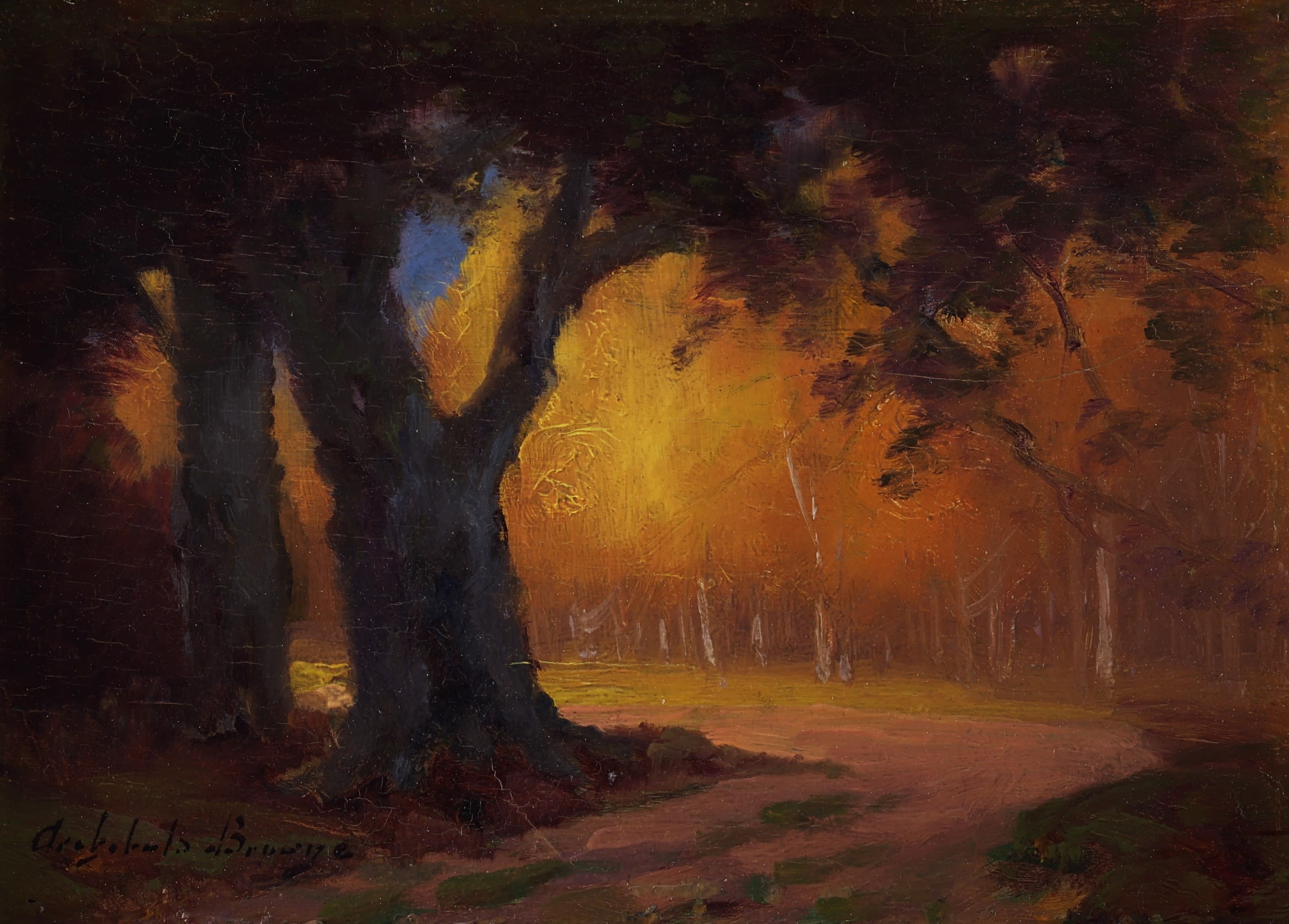
Joseph Archibald Browne; Path Through the Woods
Born in Liverpool, England, to Scottish parents, Browne spent his youth in Blantyre, Scotland, before working as a bank clerk. Drawn irresistibly to art, he emigrated to Canada in 1888, initially working in commercial offices before devoting himself fully to painting. Although largely self-taught, he studied at the Glasgow School of Art (1882–1884) and later returned there in 1912 to study under Robert Macaulay Stevenson. In 1888 he also trained briefly in Paris and in Toronto under William Cruikshank, absorbing the influences of both the Barbizon school and emerging Impressionism.
In 1907, after his and Franklin Brownell’s works were excluded from consideration by the Ontario Society of Artists, Browne resigned and became a founding member and secretary of the Canadian Art Club—a pivotal organisation that elevated professional standards and helped shape early 20th-century Canadian art. The club included leading artists such as Horatio Walker, Homer Watson, Curtis Williamson, James Wilson Morrice, William Brymner, and Edmund Morris.
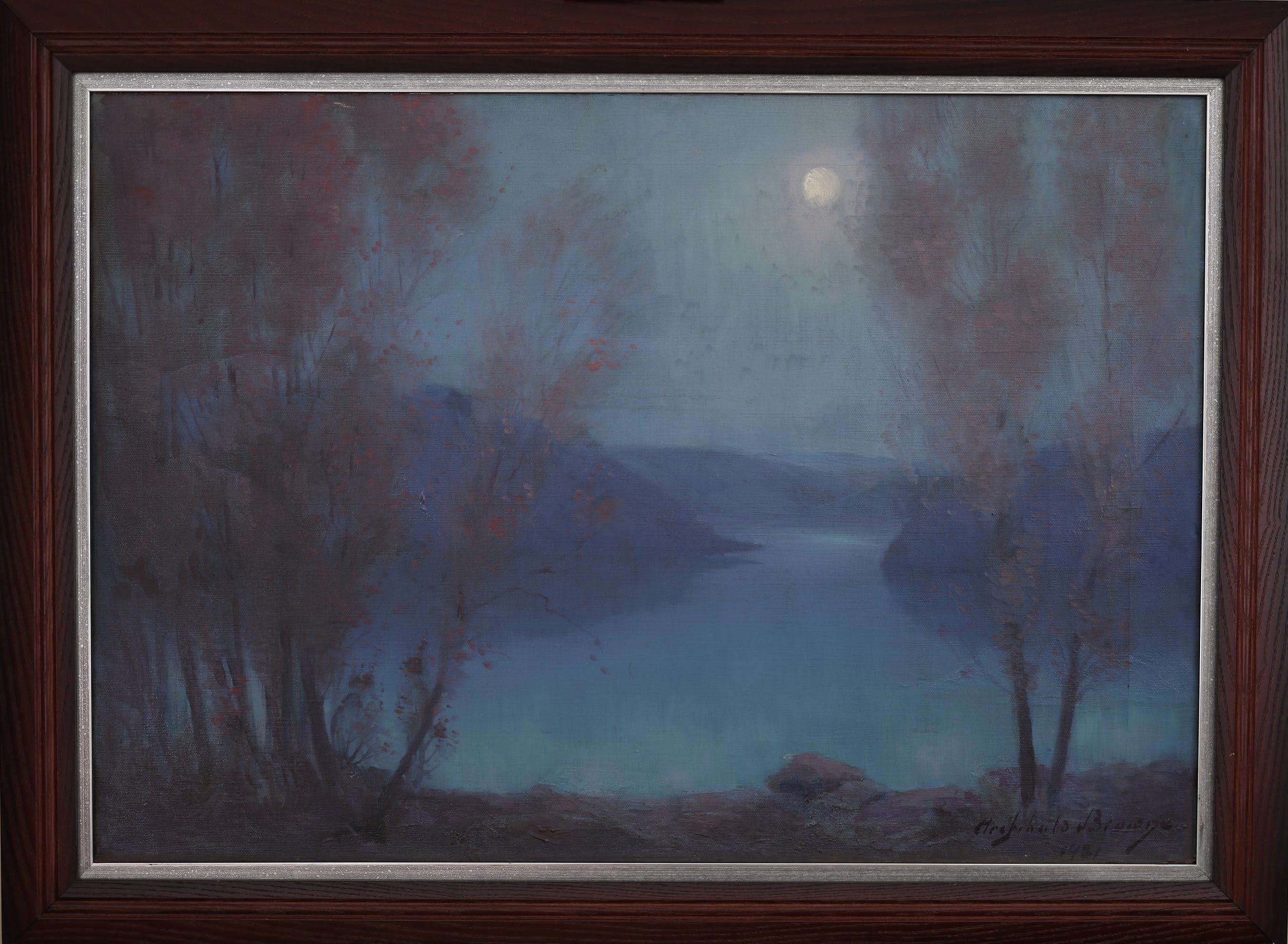
Joseph Archibald Browne; Serenity
Browne’s career flourished internationally. His paintings were exhibited across Canada, the United States, England, and Scotland, including notable showings at Marshall Field & Company in Chicago and the T. Eaton Co. Limited store in Montreal. His evocative landscapes—often nocturnal scenes bathed in twilight—were admired for their quiet mystery and refined luminosity.
He received the Jessie Dow Prize in 1923 and, in 1927, won first prize for oils at the 44th Spring Exhibition of the Art Association of Montreal. He was elected Associate of the Royal Canadian Academy (ARCA) in 1913 and full member (RCA) in 1915, and also belonged to the B.C. Society of Fine Arts.
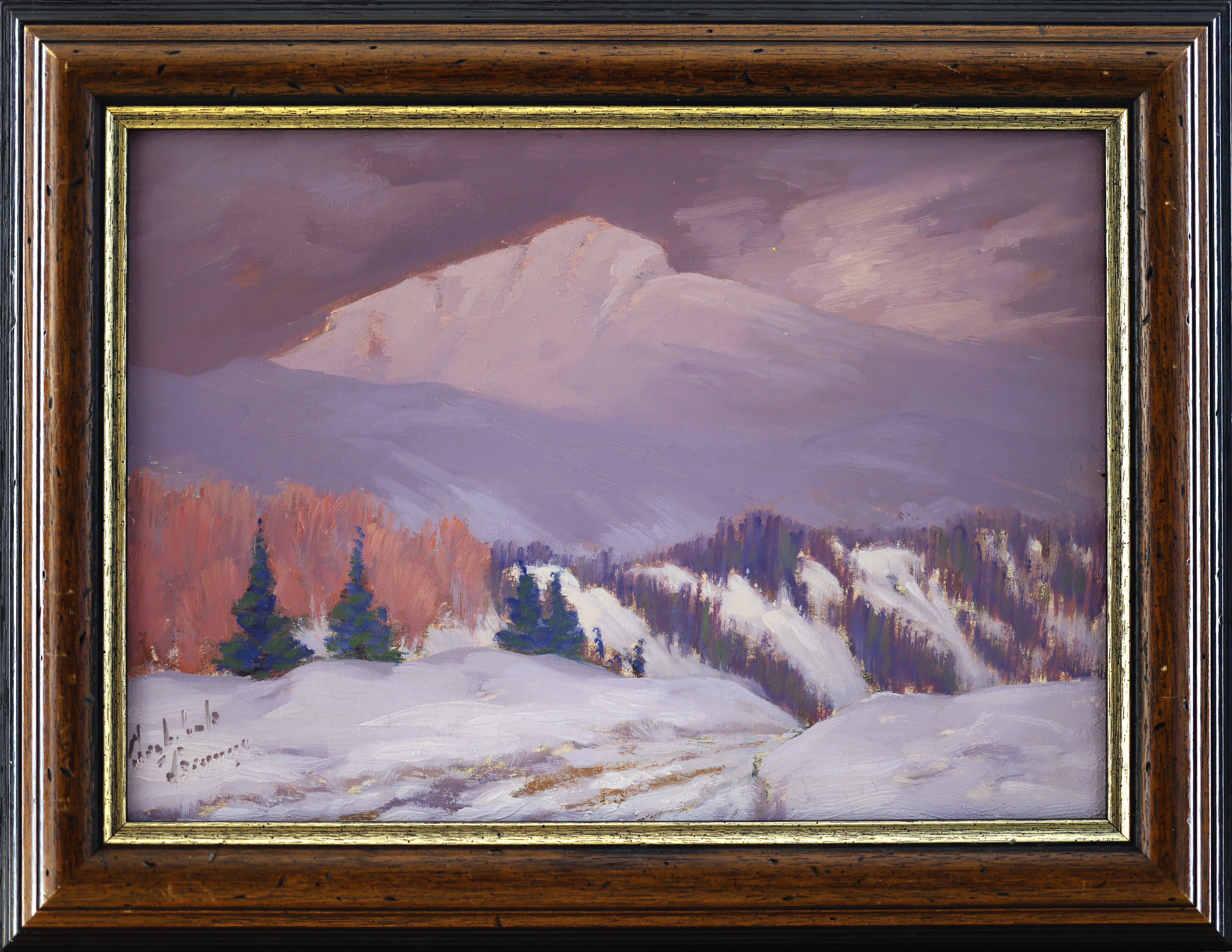
Joseph Archibald Browne; Winter Afternoon
After moving to Montreal in 1923, Browne settled in Lancaster, Ontario, in 1927, where the Laurentian landscape became a constant muse. His late works, suffused with atmospheric light and spiritual calm, were described by critic Augustus Bridle as “weirdly beautiful, with that translucent ecstasy which Browne chose as his birthright from the Highland glens.”
His paintings reside today in major public collections including the National Gallery of Canada, the Musée national des beaux-arts du Québec, the MacKenzie Art Gallery in Regina, the Robert McLaughlin Gallery in Oshawa, and Trent University in Peterborough.
Browne continued to paint into his eighties, holding his last major exhibition in Montreal in 1946. He died in Cornwall, Ontario, in 1948, and is buried in St. Joseph’s Cemetery, Lancaster.
Through his mastery of light and atmosphere, J. Archibald Browne transformed ordinary Canadian scenes into poetic visions. His art bridges the lyricism of the Barbizon tradition with the emerging modernity of early Canadian Impressionism, securing his place among Canada’s most enduring landscape painters.
